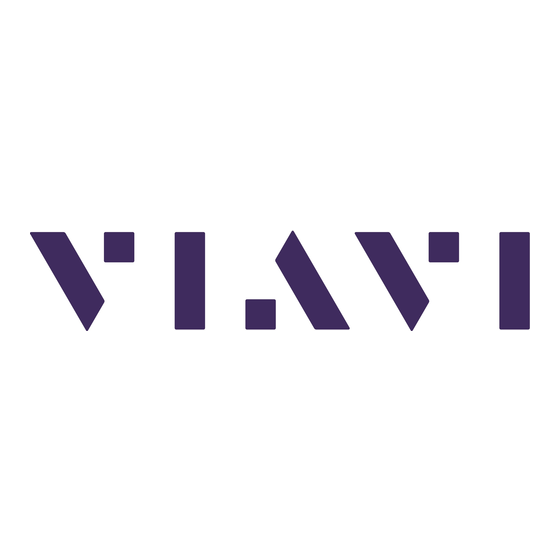
Advertisement
Quick Links
The G4-ObserverONE is best suited for Multi-10 Gb data centers.
G4-ObserverONE technical specifications
The technical specifications for the product are shown below.
System
Deployment
Base storage
Max storage
Lights Out Management (LOM)
Redundant OS drive
OS drive hot swappable
OS drive size
RAID drive hot swappable
RAID version
Rail kit
Operating system
Physical
Height
Width
Depth
Weight (with mounted rail kit or portable
unit without a travel case)
Weight (handling or portable unit in a
travel case)
Media
Monitoring interfaces
Speed
Accepted transceivers
Performance
g4observerone - 1
G4-ObserverONE
-
Multi-10 Gb data center
192TB
192TB
Yes
Yes
Yes
1 TB
Yes
6
Yes
Windows 2012 R2
-
4U
19 in
26.5 in
116 lbs
121 lbs
-
8
1/10 Gb
SFP/SFP+
1
-
1
Advertisement

Summary of Contents for Viavi G4-ObserverONE
- Page 1 G4-ObserverONE The G4-ObserverONE is best suited for Multi-10 Gb data centers. G4-ObserverONE technical specifications The technical specifications for the product are shown below. System Deployment Multi-10 Gb data center Base storage 192TB Max storage 192TB Lights Out Management (LOM) Redundant OS drive...
-
Page 2: Parts List
QSFP28 tranceivers may be SR4, LR4, or BIDI. Parts list Each appliance comes packed in a box or several boxes. The boxes contain the various components necessary for a successful installation. The G4-ObserverONE appliance box contains the following components: 1 Head unit with RAID drives preinstalled ●... - Page 3 1. Mount the appliance in your cabinet. Refer to the instructions on VIAVI Rail Kit (page 9). Use a server lift if necessary. Do not remove the drives from the chassis. 2. Connect the cables.
- Page 4 Next, give the ETH0 IP address and IPMI port address, if using, to the Observer administrator. They need the addresses to add this GigaStor probe to Observer to capture network traffic with a probe instance. 4 | © 2020 Viavi Solutions (19 Feb 2020) — viavidoc.com/observerstart...
-
Page 5: Configuring Your System
Configuring your system There are a number of items to do to get your system on your network and ready to use. Startup and shutdown There are several procedures to turn on or off your system. First plug in the power cord 1. - Page 6 components by keeping the dust plugs installed until you are ready to install the cables. Your transceivers can be inserted into any open port and in any order. ♦ You can hot-swap the connected transceivers at any time, but it is ♦...
- Page 7 Configuring the LOM or IPMI port Your appliance comes with an on-board LOM or IPMI port that provides you a dedicated management channel for device maintenance. It allows you to monitor, start, stop, and manage your appliance remotely regardless of whether the appliance is powered on.
- Page 8 8. To change the default password, open a web browser to http:// <IpAddressOfIPMIport>, and log on with the user name ADMIN and password ADMIN in caps. IpAddressOfIPMIport is the station IP address you configured in step 6. The user name and password boxes are always case-sensitive. 9.
- Page 9 3. Slide the rail toward the front of the chassis to hook the inner rail onto the side of the chassis. 4. (Optional) If desired, secure the rail with two flat head M4 x 4mm screws (and washers) as illustrated. 5. Repeat for the other inner rail. VIAVI Rail Kit | 9...
- Page 10 This section provides information on installing a chassis into a rack unit with the rails provided. There are a variety of rack units on the market, so the assembly procedure may differ slightly. Also refer to the installation instructions for your rack unit. 10 | © 2020 Viavi Solutions (19 Feb 2020) — viavidoc.com/observerstart...
-
Page 11: Technical Support
Caution: Do not pick up the server by the front handles. They are designed to pull the system from a rack only. 1. Align the chassis rails with the front of the rack rails. 2. Slide the chassis rails into the rack rails, keeping the pressure even on both both sides. You may have to depress the locking tabs while inserting.







Need help?
Do you have a question about the G4-ObserverONE and is the answer not in the manual?
Questions and answers